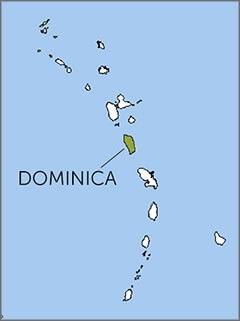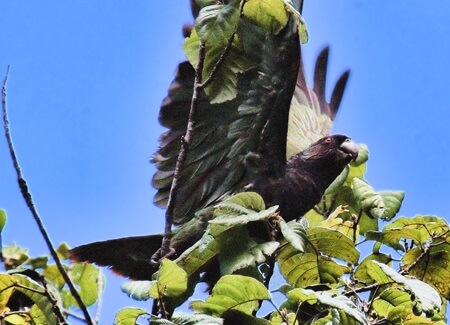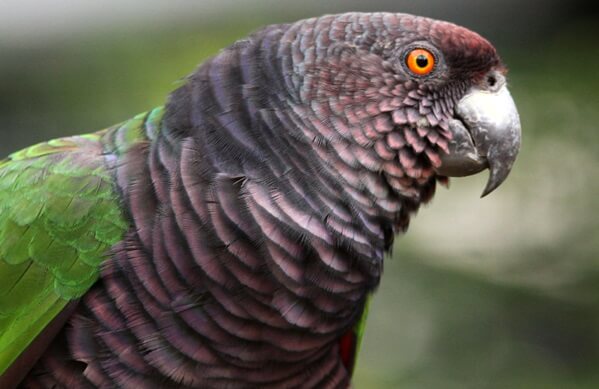
High in the remote mountain forests on the small Caribbean island of Dominica hides a national treasure: the Imperial Amazon, known to local people as the Sisserou. This striking purple-and-green parrot is Dominica's national bird, found on its flag and coat of arms. It's also the largest parrot in its genus, Amazona, with a wingspan of about 30 inches, and a bird that can reach very old age — up to 70 years in captivity — in the company of its lifelong mate.
As rare as it is beautiful, the Imperial Amazon is recognized as an Alliance for Zero Extinction (AZE) species based on its small population and limited range. Like other AZE species, including Lear's Macaw, Araripe Manakin, and Glittering Starfrontlet, this parrot can be found in only one place on Earth.
Since the Imperial Amazon is found just on Dominica, it is especially vulnerable to catastrophic weather events, particularly hurricanes. Habitat loss is another major threat, and hunting for food and the illegal pet trade have also contributed to this parrot's decline.
Current Controversy
On March 17, 2018, two Imperial Amazons (along with 10 Red-necked Amazons, another endemic parrot species) were exported from Dominica to Germany's Association for the Conservation of Threatened Parrots. The export took place in spite of CITES' (Convention on International Trade in Endangered Species of Wild Fauna and Flora) recommendation that all trade involving CITES-listed species from Dominica be suspended. In addition, our partner BirdsCaribbean reports that "the export was not authorized by Dominica's Forestry, Wildlife and Parks Division, which is Dominica's CITES management and wildlife authority." ABC is working with BirdsCaribbean and other groups to redress this matter.
Rugged Mountaineers
The terrain favored by Imperial Amazon is extremely rugged, with nest sites often located in trees on very steep slopes. Like many others of their tribe, including Thick-billed Parrot and Yellow-eared Parrot, they nest in tree cavities, often heavily festooned with vines and epiphytes, which makes observation of their nesting activity difficult. A mated pair will defend their nesting territory year-round.
This species has a low reproductive rate. A pair may nest only every other year, normally fledging one chick from a clutch of two eggs. This low reproductive output makes recovery rates slow. Even with the strong forest-protection and conservation measures enacted following Hurricane David in 1979, it took nearly 25 years for the Imperial Amazon to re-establish most of its former range and achieve pre-hurricane population numbers. The devastation from last year's Hurricane Maria has likely set species numbers back once again.
Sign up for ABC's eNews to learn how you can help protect birds

Imperial Amazon by Paul Reillo, Rare Species Conservatory Foundation
Riding the Storm Out
Habitat loss and a series of hurricanes caused a steep decline in Imperial Amazon numbers — in 1993, the species had declined to just 80–100 individuals. The species' numbers have slowly increased thanks to intensive conservation efforts led by Dominica's Forestry, Wildlife and Parks Division and the Rare Species Conservatory Foundation.
Imperial Amazons are protected in Dominica's national park system, including in Morne Diablotin National Park, which contains confirmed nesting areas for the species. While local hunting and trapping have now been mostly eliminated as threats, vigilance is needed to ensure ongoing habitat protection and to prevent illegal exports.
Donate to support ABC's conservation mission!



















































